
While green building often focuses on improvements to the energy efficiency of homes with mechanical heating, cooling, and ventilation systems, another trend explores non-mechanical means toward comfort. The low-tech approach, sometimes called biomimicry, relies on some conventional methods home designers and builders have used in response to local climates in combination with others that are inspired by nature.
Steve Mouzon published The Original Green: Unlocking the Mystery of True Sustainability 10 years ago. Had he published the book today, the title may have read “Unlocking the Mystery of Resiliency.” “Originally (before the Thermostat Age), people had no choice but to build green. Otherwise, people would not survive long,” Mouzon writes. “Green,” in this case, refers to using building materials and methods appropriate for the region to lessen dependence on mechanical life support (HVAC) or even connection to a utility grid.
A lesser known but no less valuable book authored by Mouzon is A Living Tradition: Architecture of the Bahamas. While researching this book, Mouzon learned a valuable lesson. He realized that asking the question “Why did they do it this way?” held the key to deep learning. After Hurricane Dorian devastated the island and “sucked the economy out to sea,” as Mouzon puts it, his book—which chronicles four centuries of Bahamian building traditions—helped island contractors rediscover what builders knew centuries ago.
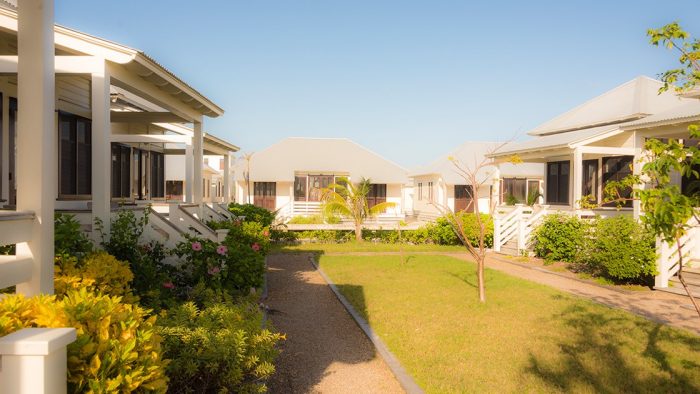
From Mouzon’s book, modern Bahamian builders learned that island roofs configured as hips resisted high winds because, as Mouzon writes: “In the four-sided geometry, each roof panel supports the others, strengthening the structure beyond the resistance of a conventional gable roof.” Gables often collapse in hurricane winds. Traditional Bahamian houses have roof pitches between 8:12 and 9:12, which hurricane researchers have determined is “a sweet spot, such that the pitch is not so high as to overturn the structure or so low that uplift pressures blow off the roof,” Mouzon explains. How did island builders engineer these strategies centuries ago? “Some hard-won wisdom,” Mouzon answers, adding: “When certain types of homes held up to storms while others did not, people said, ‘Let’s build houses molded on the ones that survived.’”
Mouzon found it curious that when the eye of Hurricane Irene cut across Schooner Bay in the Bahamas, the buildings sustained no damage—with the minor exception of a few outdoor ceiling fans. With winds exceeding 125 mph, the buildings in the town fared well, although none would have met U.S. hurricane building standards. Instead of modern building codes, they followed traditional practices. “Not a single home in Schooner Bay lost a single pane of glass,” Mouzon writes. “The windows were not Miami-Dade approved. The windows were built by fishermen. But homeowners did what they had always done. They shut the shutters. This not only saved the glass but all the ensuing damage that occurs when wind-driven rain floods the house. We use shutters as a decorative element with little thought to their practical, protective application.”
Mouzon lives in Tuscaloosa, Alabama, and has chronicled the building methods used by traditional builders to cope with heat and humidity. “If you look at windows in a moderate climate, like the upper East Coast, you’ll see Cape Cod[-style houses] with windows that stand three feet tall,” Mouzon explains, “but in the South, a window may stand nine feet [tall]. In the evening, you lower the upper sash and then raise the lower, and natural convection draws the cool, evening breeze into the house.”
Mouzon admits that what is required to create a more resilient world today includes people learning to tolerate a wider range of conditions. He writes: “In traditional societies, like in the Bahamas, you’ll find life occurs al fresco. People build attractive courtyards, and by spending time outside, their bodies get acclimatized. When it gets close to 90-degrees, folks use a hand-held fan to cool off. When it dips into the low sixties, they dress a little warmer. Today, we have thermostat wars over two degrees. With a two-degree comfort range, the only alternative is conditioning equipment running all day long because nature never stays within such a narrow range.”
Resilient ventilation
Mouzon built a superinsulated home that included two wings with a tall tower between them. He re-created an ancient cooling technology called a “wind tower.” The wind tower works like a chimney in reverse, drawing cool evening air down the [chute]. “We would open the top tower windows at night and then a couple windows in the lower stories. . . . It’s the vernacular inventiveness that figures out what works in the region.” In many hot climates, the wind tower is a standard feature. In some older buildings, especially warehouses and industrial facilities, these towers have louvered inlets at the top of the structure, as shown in the illustration below. Nowadays, you’ll find the chimneys shuttered and no longer functioning—but open them up, and they could reduce air-conditioning demands. These low-tech strategies are being rediscovered and improved upon today.

I asked Mouzon how builders like me can learn such strategies. He told me to take a lot of photos in the old parts of town and study them. He says looking at many homes will reveal patterns—elements that repeat. When you spot a pattern, ask yourself (and any older people in the area): Why did they do it this way? In this way, you begin to tease out the wisdom embodied in the buildings. He also recommended reading Mother Earth News and the Foxfire Series of 14 volumes of interviews with Appalachian people, which he describes as “a wealth of stories of local calibration inventiveness.”
Resilient dehumidification
In a recent article in National Geographic, Janine Benyus, a biologist, innovation consultant, and author of the book Biomimicry: Innovation Inspired by Nature, the author lists five air-conditioning techniques inspired by nature. One of the innovations solves a problem that convection strategies do not address, namely dehumidification. Mimicking the brown dog tick’s method of hydration—using a saline secretion to draw water from atmospheric humidity—scientists have developed a passive, liquid dehumidifier designed to draw and capture moisture from the air inside a building. It works a little like the desiccant salt pouch you find packaged with electronics to keep equipment dry during transportation and storage.
Better ceiling fans
The electric fan offers a low-cost means to comfort. Researchers have looked to biomimicry to improve on the five-blade system. A Canadian startup called WhalePower derives its proprietary Tubercle Technology by creating blades based on the “bumpy design of a humpback whale’s flipper.” The developers of the technology claim the fans deliver enhanced power, even at low speed, and quiet operation. Testing at the Wind Energy Institute of Canada in Prince Edward Island demonstrated that the tubercle blades turned out to produce 20% more annualized power than stock blades.
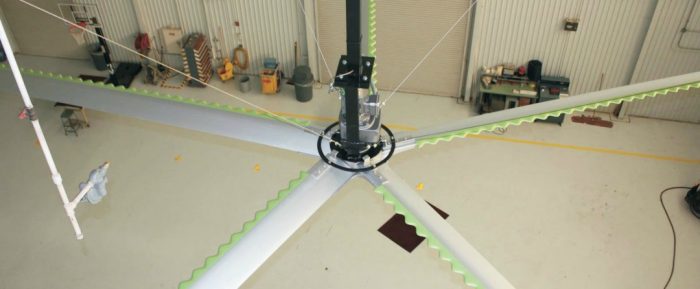
PAX Scientific, a fluid dynamics research and design firm, is marketing air movers based on what the company describes as “nature’s streamlining principle.” The approach uses fluid dynamics to mimic nature’s flow efficiencies into streamlined design geometries. PAX claims their geometries improve the performance, output, and energy use of a wide range of technology, including fans.
Coding for resilience
To become mainstream, the movement toward resiliency through nature-informed strategies requires regulatory support. Building codes and zoning laws must encourage it. For example, Korkut Onaran, Ph.D., principal and owner of Pel-Ona Architects and Urbanists and an assistant professor adjunct at the University of Colorado, resides in a brick house built about a century ago. The house has no insulation but load-bearing masonry walls that function as a heat sink. He says, “During our sunny, Colorado winter, the walls absorb heat during the day and radiate it into the house at night.
Consequently, our utility bills remain exceptionally low, even without insulation,” Onaran explains. However, he added, “Building codes would not permit you to construct this house today. Why not?”
In his recent book, Crafting Form-Based Codes: Resilient Design, Policy, and Regulation, Onaran goes beyond construction techniques to advocate for building types designed for their environment. “We talk about green building, by which we mean energy efficiency, but one day, energy may not be as dependable. By returning to building prototypes of the past, we can create comfort zones that do not depend on mechanical heating and cooling. Resilience means surviving not only storms but power shortages as well. Ask yourself if you can live comfortably in your house when the grid goes down for an extended period. If your building environment has comfort zones and thus supports life, you’re lucky. To achieve this level of resilience nationally, we must relearn from the past,” Onaran says.
Although most homes in moderate climates provide adequate shelter even during blackouts, those in extreme environments do not do as well. “In the past, people did not have the luxury of detached housing,” Onaran explains. “In an extreme desert environment, for instance, you’re trying to minimize the exposure of your exterior envelope, so buildings touch each other. Look at any traditional settlement in the desert. Buildings minimize exterior exposure. In a harsh environment, most of the buildings we see today would suffer and become unlivable within hours without energy-fueled, mechanical heating air conditioning.”
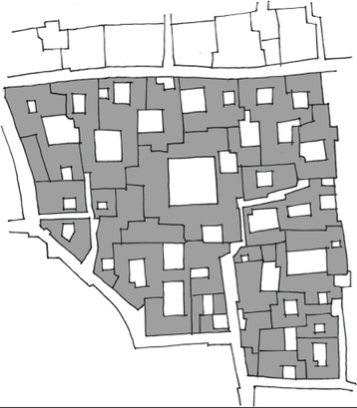
Knowing that climate change implies a warming planet, Onaran advocates for zoning and planning that anticipates this by devoting an entire chapter of his book to urban planning in hot-dry and hot-humid climates. “If you build in a hot-arid climate, you maximize shade and capture the evening cool [air]. In a hot-humid environment, you must increase air movement as much as possible. There are ways to design homes and neighborhoods that achieve this,” he insists. Examples exist in traditional communities, such as the Pueblo settlements in the deserts of New Mexico or the airy homes of New Orleans, designed to promote breezes.
Beyond the individual house, Onaran stresses the need for nesting life-sustaining systems that will supply all of life’s most basic needs when the larger network becomes unreliable. At the household scale, this is difficult to achieve but possible and within the grasp of a village-size community. This nesting of necessities at the local level is the subject of Onaran’s forthcoming book, An Urbanism for a Difficult Future: Practical Responses to the Climate Crisis, written in collaboration with planner Andrés Duany and civil engineer Paul Crabtree.
Production of the necessities, says Onaran—including food, water, and energy—must come at various scales that nest within each other and supply survivability when the larger, international networks go down. As an example of nesting, Onaran says a solar array should include a few panels disconnected from the smart grid, supplying only batteries that would serve basic household systems during a brownout. On the community level, a neighborhood could develop small-scale energy generation through a community solar array and wind farm, as well as small-scale farming for food. Think of the Victory Gardens of WWII. These elements, Onaran argues, must become part of the zoning requirements for new neighborhoods. While it’s unlikely planners will require this, for now, the impacts of outages and supply chain breakdowns may pressure regulators into coding for resilience to shore up against network failures as well as high winds, earthquakes, and floods.
According to Onaran, by incentivizing local scales of production that can run independently, society will achieve the definition of holistic resilience, which is the community’s capacity to bridge and recover quickly from disruptions of every kind. Both natural and manufactured.
_________________________________________________________________________
Fernando Pagés Ruiz is a builder and an ICC-certified residential building inspector active in code development. Photos from manufacturers, except where noted.
Weekly Newsletter
Get building science and energy efficiency advice, plus special offers, in your inbox.





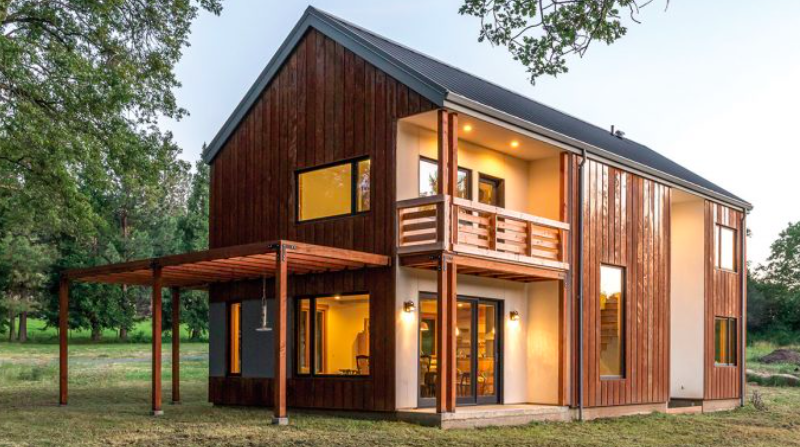
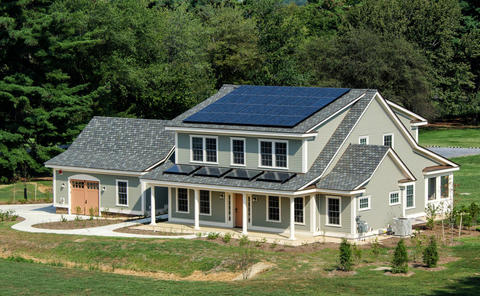
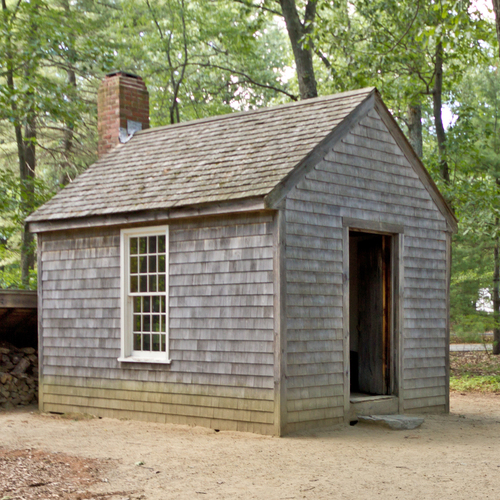






16 Comments
Some interesting concepts, especially around systems resiliency.
Though using an uninsulated brick house in Colorado as an example of what we might want to build triggers some severe skepticism as to the motivations here. Any C0loradans have a gut feel on if that's just bat crazy? Seems it to me, but I don't live there.
I live in Colorado and find that claim extremely dubious. While the south-facing wall could get substantial solar energy during the day, all the other walls will be losing heat. And of course all of the exterior will be losing significant heat throughout the night.
I think it worth distinguishing between what building designs were a certain way as a response to climate, and those chosen because of the limitations at the time. Log cabins are a good example of the latter. They are the product of settlement in forested areas where the necessary land-clearing meant lumber inefficiency didn't matter, and where the builders had limited tools and no access to sawmills. Not every building form is the result of well earned knowledge, and many are heavily culturally influenced.
I'm curious about Mouson's example of wind-towers. Would they really be able to reverse the stack effect in a warm house and vent through the lower level? I use a similar setup - a open window set in a roof lantern which acts as an exhaust on summer evenings, while drawing cooler air in at the first floor below.
"a open window set in a roof lantern which acts as an exhaust on summer evenings, while drawing cooler air in at the first floor below."
^This. More accurate than the article's description of "drawing cool evening air down the [chute]."
maybe
the chute has not so much warm air as the house (with no AC) because no windows etc. So, the stack effect of the house might win, once this loop is primed it would go on.
Good points.
Re wind towers: a google search lead me to the term 'wind catcher.' The wiki page has good info on it. It seems meant to 'catch' wind on high, and some appear to even utilize Bernoulli's principle a bit. Some also appear to place an exhaust exit at a similar level as the intake, thus not fighting stack effect so much. Looks like it originates from desert climates, which I assume excel at delivering cooler evening winds.
I agree that the lessons to be learned from the past are multifold. On the one hand, the lack of technology and infrastructure (all the way from sawmills to the electric grid) meant the techniques used to survive were more primitive, self-reliant, and not based on modern HVAC (obviously). I think the trade-offs in materials and energy inputs would be considered very differently. And, as is not lost on Mouson, comfort tolerances.
I wonder if the biggest lessons to learn may revolve around resiliency and by extension self sufficiency. The concept of nesting systems is interesting.
I stop and wonder every now and then about where we are heading with all-electric loads and their reliance on the largest machine ever known to mankind (the grid). That's pretty cool and perhaps really efficient on the one hand, but will we have the needed resiliency? Perhaps the resiliency will best be built into the grid itself and not into each house via old timey design, but you never know.
There is certainly something romantic about building structures that tap into the ebbs and flows of nature to deliver us our comforts without relying on lots of 'active' equipment that takes armies of specialists to comprehend, construct, and maintain.
I never fully understood why logs were used instead of sawed boards, even though it took much more wood to build that way. Then one day I was in Rwanda watching sawyers sawing eucalyptus logs by hand lengthwise....watching them I fully realized how much work it takes to make a board from a log....even for two strong guys with a big double handled saw!
As for the tower effect, my dad's house on the NJ coast has a tall thin stair tower with a door at the top leading to a roof deck. When we open that door and the windows on the bottom floor-it creates just this effect
Nick,
In the back of my property are the stumps of several trees about six feet in diameter which you can still see were fallen using a two person saw. Having worked as a logger, with all the modern equipment available, I'm in awe of the immense physical effort early builders had to put in.
Yes. It is amazing
I would like to do a TV show where we pit top Pro athletes against everyday people from developing nations (or folks in the US who still do hard manual labor the traditional way) in endurance tests to see if the pros could keep up with for an entire day doing these traditional tasks. People walking for hours, then working in fields; sawyers sawing logs all day; elderly women carrying 5gal water jugs 10 miles; guys mixing concrete by hand for 10 hour days, etc. The toughness and determination of every day people is amazing and woefully under appreciated by modern society.
Nick,
I grew up in a large brick townhouse in Montreal, with beautiful mill work, cabinetry and finishes. My family as able to afford a house like that in large part because the builders who worked so hard on it were inadequately rewarded for their efforts, and lived in the poorer districts of the city.
A lot has changed since then, and the skilled trades are now better rewarded for their work, but I don't know many builders for who that didn't come at the expense of their bodies. Sit in the lumberyard parking lot and watch them try and get out of their trucks in the morning. They have paid for what they have achieved.
There are competitions among collegiate teams in a sport called "woodsmen" that includes two-person saws, operated by two or for the more challenging event, just one person, as well as various ax work events, log rolling, etc. There are currently 36 US teams, according to this article: https://en.wikipedia.org/wiki/Woodsman
I am replying to Malcom and Charlie above since the reply button doesn't show up below their responses....
Yes, your points are well taken about hard work and pay for it.....hard physical labor is tough. Before I went to law school I worked construction by day and as a Teamster on the loading docks by night. The money was very good ($14 hr. in 1980) but I quickly saw how most guys were physically done by 50. So I changed careers and got a desk job. But I continue to do hard work on weekends. It is always good to remember how much of the world still lives by hard work and sweat.
Charlie, I have seen these lumberjack competitions, they are great. The strength over an extended period of time is what is interesting.
*felled
Exactly, Malcolm - construction workers have been subsidizing the homes of the well-off for centuries.
I remember Hurricane Irene well. When we renovated my dad's old house on the NJ coast, we were given the option to provide plywood window covers instead of very expensive hurricane windows. So when Irene was coming up the coast, I went down and spent a day and a half boarding up his windows on three floors!. The eye of Irene made landfall right there, but by then its winds were only 70mph and did no damage. So when Sandy came up a few years later, I was too lazy to put up the plywood....But the old house survived.
My non profit builds schools and clinics in remote villages in Central Africa so I sometimes visit. I can confirm that people in these traditional cultures are amazingly resilient and creative and understand their environment very well.... Most importantly, they do not waste materials! I understood why one day as I watched sawyers saw hardwood logs length wise to make lumber. Every piece of lumber took so much sweat and knowhow to produce-each was in its own way, a work of craftsmanship
Speaking from twenty years experience in the trades. It's no surprise Americans have lost interest in construction jobs. When the cost of a few sheets of Zip plywood is equal to the daily salary of a worker it becomes obvious wages have lagged behind for too long. Hence our southern border problem.
Log in or create an account to post a comment.
Sign up Log in